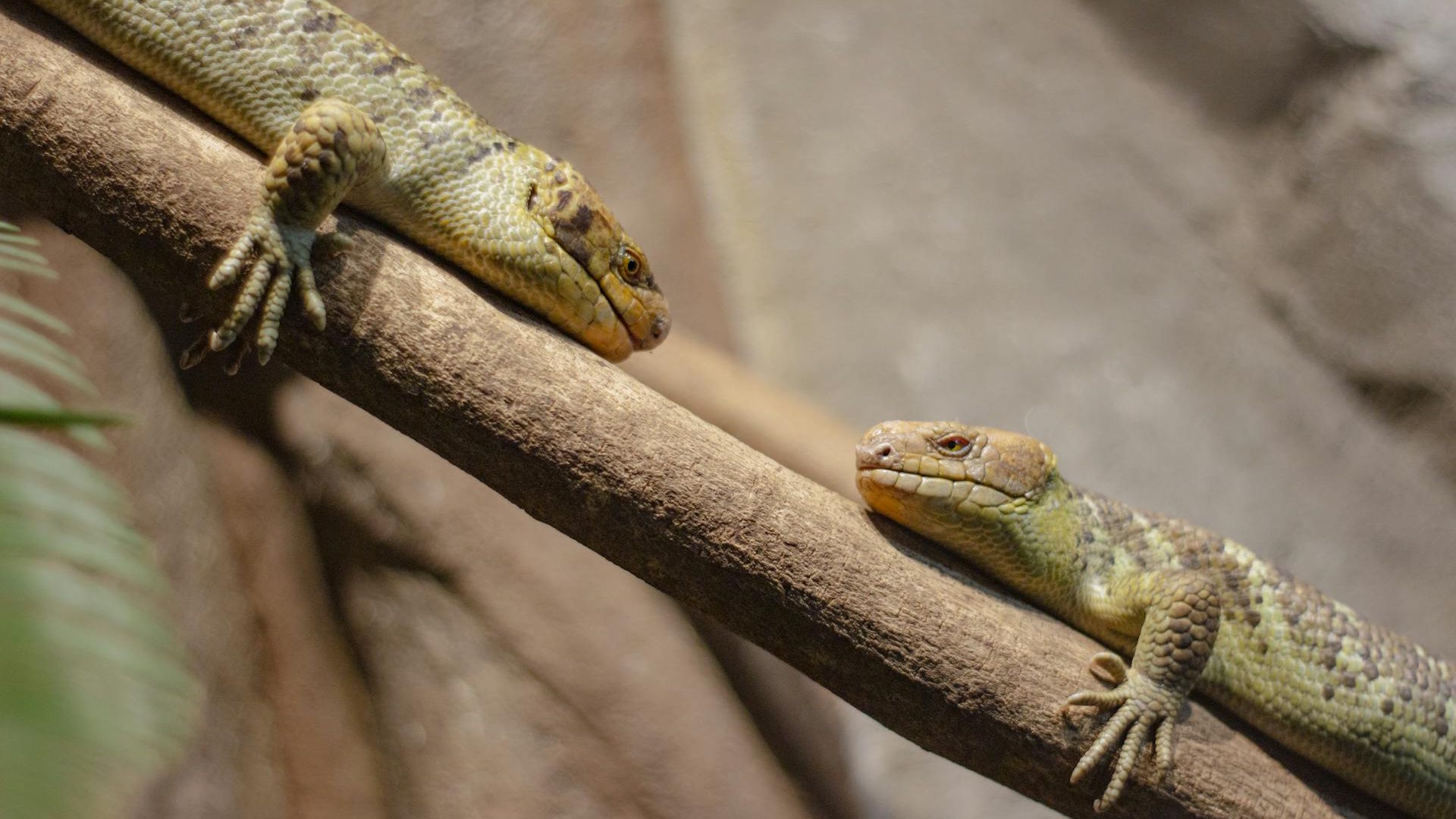When we think of intelligent animals, our minds often jump to dolphins, primates, or clever corvids like crows and ravens. Reptiles, particularly lizards, rarely make that list.
Yet beneath those scaly exteriors and seemingly blank stares lies cognitive ability far more sophisticated than most people realize.
The world of lizard intelligence is a fascinating realm where problem-solving abilities, social learning, and even personality emerge in surprising ways.
From monitors who can count to skinks who recognize their human caregivers, lizards are challenging our understanding of reptilian cognition and proving themselves to be much smarter than their cold-blooded reputation suggests.
Monitor Lizards: The Einstein of the Lizard World
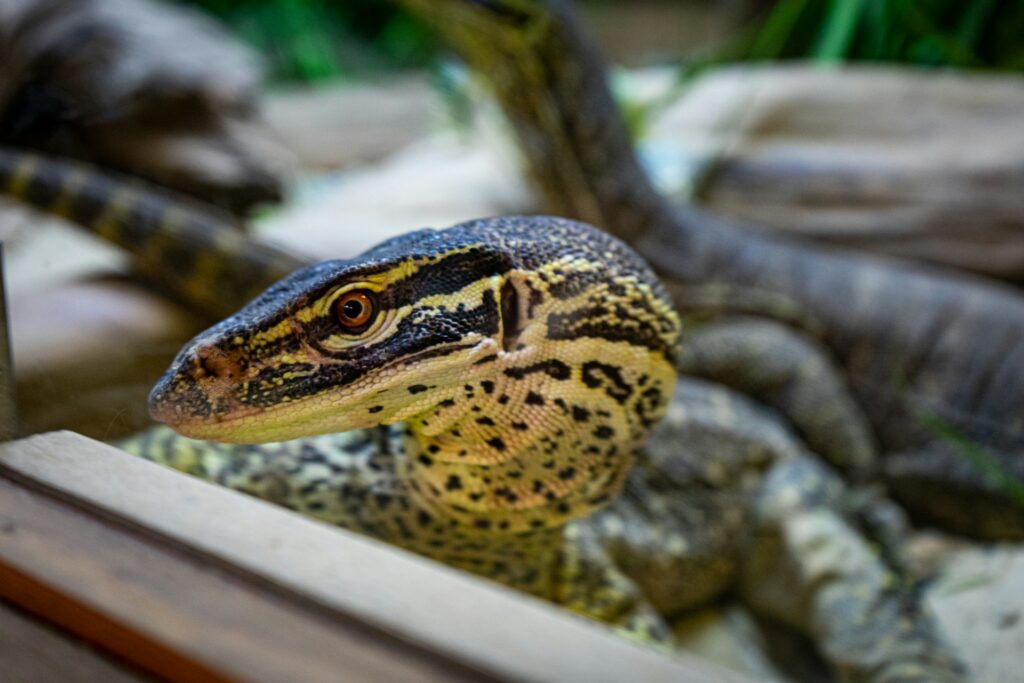
Monitor lizards consistently top the charts when discussing lizard intelligence, with the Komodo dragon and its relatives demonstrating remarkable cognitive abilities.
These impressive reptiles can count up to six and distinguish between different quantities, showing number sense once thought exclusive to mammals and birds.
Researchers have observed monitors solving complex puzzles to reach food rewards, demonstrating both patience and strategic thinking.
Perhaps most impressively, monitors show evidence of social learning—watching and mimicking the successful behaviors of other lizards to gain rewards.
Their large brain-to-body ratio correlates with this enhanced cognitive ability, lending credence to their reputation as the geniuses of the lizard world.
Tegus: The Reptilian Dog

Argentine black and white tegus (Salvator merianae) display such remarkable intelligence that they’ve earned the nickname “reptilian dogs” among enthusiasts.
These South American lizards form strong bonds with their caretakers, coming when called and actively seeking out human interaction. Tegus can remember solutions to puzzles for months or even years, displaying impressive long-term memory capabilities.
In captivity, they quickly learn routines and can be potty-trained, a level of cognitive flexibility rarely associated with reptiles.
Perhaps most extraordinarily, tegus demonstrate emotional responses, showing excitement when their favorite human enters the room and preferences for certain types of interaction, challenging the notion that reptiles are merely driven by instinct.
Anoles: Masters of Behavioral Flexibility

Anole lizards might be small, but their cognitive abilities are anything but diminutive. These common reptiles display remarkable behavioral flexibility, rapidly adapting to new environments and challenges.
In experimental settings, anoles can learn to associate colors with food rewards, consistently choosing the correct color even when researchers switch the physical location of the stimuli.
Brown anoles in particular have demonstrated impressive problem-solving skills when foraging, using trial-and-error approaches and remembering successful techniques.
Perhaps most surprisingly, studies have revealed that anoles possess distinct personalities, with some individuals being consistently bolder, more exploratory, or more sociable than others—a trait once thought limited to “higher” vertebrates.
Bearded Dragons: The Social Learners
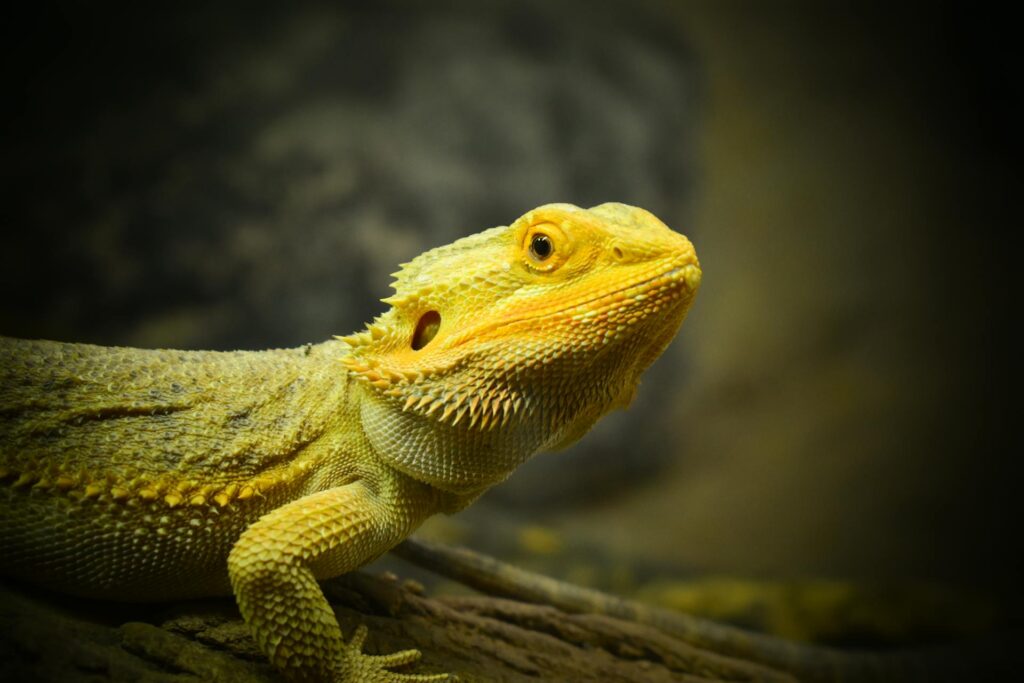
Bearded dragons have revolutionized our understanding of reptile cognition with their unexpected capacity for social learning.
In groundbreaking research, these popular pet lizards demonstrated the ability to learn by watching and imitating other bearded dragons, opening sliding doors to access food rewards after observing demonstrations.
They can distinguish between familiar and unfamiliar humans, often showing preferences for their regular caretakers.
Bearded dragons also appear to have rudimentary counting abilities, differentiating between small quantities of food items.
Their responsiveness in enrichment scenarios suggests they possess mental mapping capabilities, remembering where food is hidden and the quickest routes to reach it.
Leopard Geckos: Memory Champions
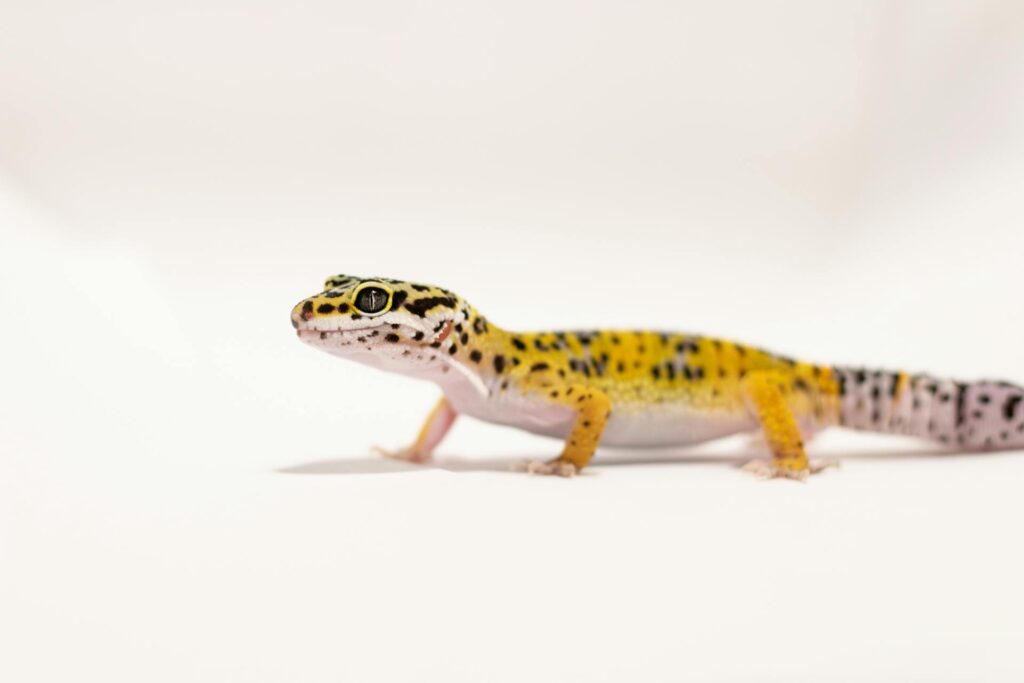
Leopard geckos demonstrate impressive spatial memory capabilities that belie their small size and cute appearance. These popular pets can create detailed mental maps of their environments, remembering the locations of hiding spots, food sources, and potential threats.
In maze testing, leopard geckos show progressive improvement, suggesting they remember and learn from past experiences rather than solving the maze anew each time.
Even more remarkably, they appear capable of recognizing individual humans, responding differently to their regular caretakers versus strangers.
Their ability to remember negative experiences and avoid similar situations in the future demonstrates a sophisticated level of associative learning not traditionally attributed to reptiles.
The Neuro-Anatomy Behind Lizard Intelligence

Contrary to outdated notions of the “reptilian brain” as primitive, modern neuroscience reveals that lizard brains possess surprising complexity and specialization. While structurally different from mammalian brains, lizard brains feature well-developed regions for sensory processing, learning, and memory.
The dorsal ventricular ridge (DVR) in reptiles serves similar functions to parts of the mammalian neocortex, processing sensory information and facilitating learning.
Some intelligent lizard species, particularly monitors, possess brain-to-body mass ratios comparable to those of some mammals and birds, challenging the notion that large brain size relative to body is exclusive to “higher” animals.
Recent research even suggests that certain lizard species may have rudimentary forms of REM sleep, potentially indicating dream-like states previously thought impossible in reptiles.
Blue-Tongued Skinks: Emotional Intelligence

Blue-tongued skinks demonstrate a surprising degree of emotional intelligence and social recognition that challenges conventional views of reptile cognition.
These distinctive lizards can recognize their regular caretakers, often responding with excitement and approaching familiar humans while remaining wary of strangers.
They display clear preferences for certain foods, people, and environmental conditions, suggesting an internal subjective experience more complex than mere instinct.
Blue-tongued skinks also show evidence of mood states; they may seek out physical contact when calm and retreat when stressed, demonstrating self-regulation.
Their ability to form what appear to be social bonds, particularly with human caretakers, suggests emotional processing capabilities previously unrecognized in lizards.
Chameleons: Problem-Solvers in Disguise
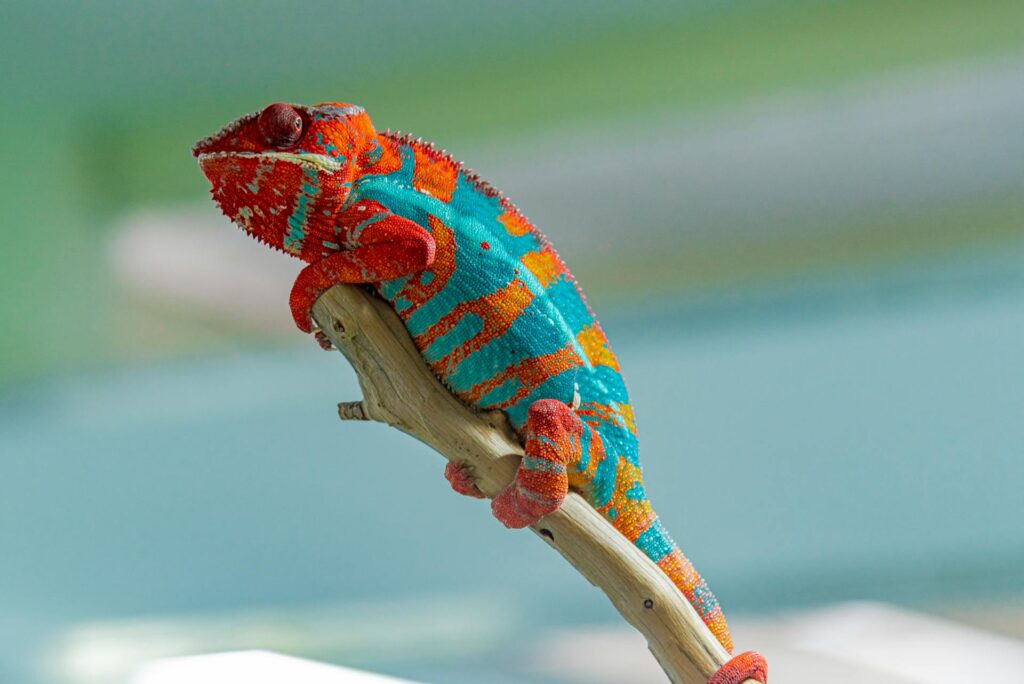
Behind their famous color-changing abilities, chameleons harbor surprising cognitive capabilities that make them among the most intelligent lizards.
These specialized reptiles demonstrate exceptional problem-solving skills, particularly when hunting, calculating complex ballistic trajectories for their lightning-fast tongue strikes with remarkable precision.
Chameleons show evidence of planning behavior, sometimes taking circuitous routes to approach prey rather than direct paths that might alert their quarry.
In captivity, they quickly learn which containers hold food and which are empty, showing object permanence—understanding that objects continue to exist even when out of sight.
Perhaps most impressively, chameleons can distinguish between reflections and actual rivals, a level of self-recognition that hints at a more sophisticated sense of self than previously attributed to lizards.
Green Iguanas: Underestimated Intellectuals
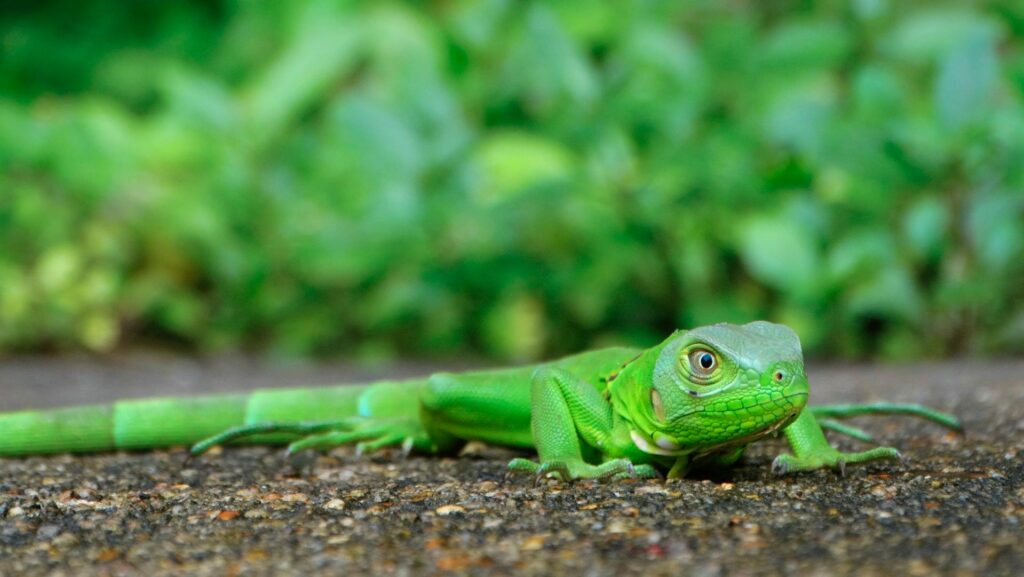
Green iguanas possess cognitive abilities far beyond what their sometimes lethargic appearance might suggest.
These large herbivores demonstrate impressive spatial memory, remembering specific locations of preferred food sources in their complex arboreal environments.
When properly socialized, captive iguanas learn to distinguish between different human handlers, often showing preferences through their willingness to approach or accept handling.
They display remarkable problem-solving abilities when motivated, figuring out how to overcome obstacles or access desirable basking spots through trial and error.
Research indicates that iguanas may possess rudimentary counting abilities, distinguishing between different quantities of food items and consistently selecting the larger amount.
Intelligence Testing in Lizards
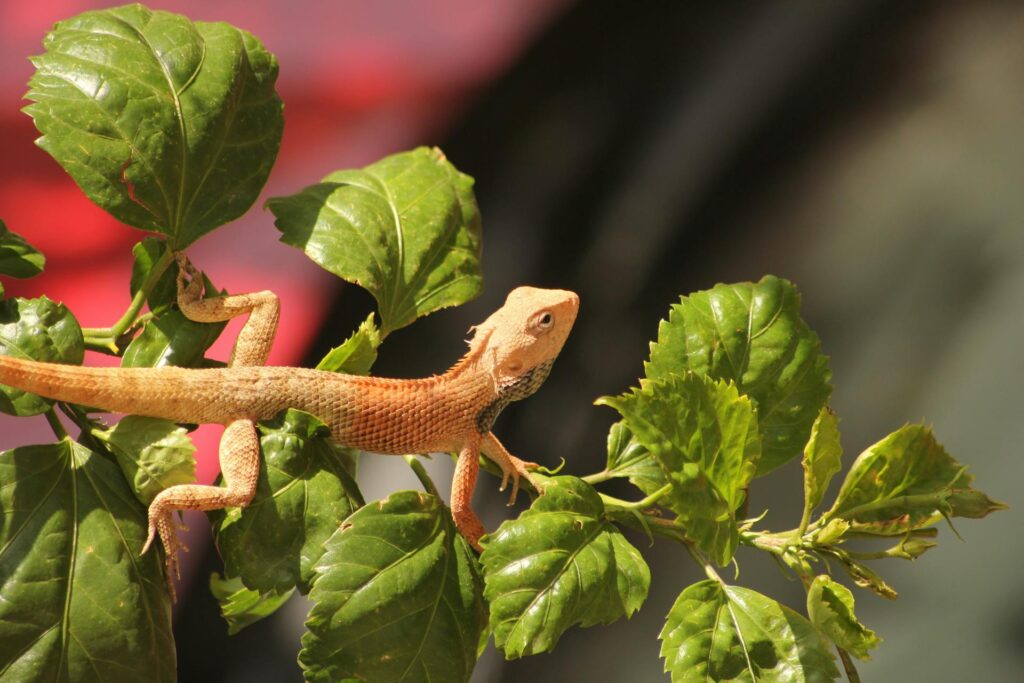
Scientists have developed increasingly sophisticated methods to assess lizard intelligence, challenging anthropocentric biases in cognitive testing.
Modern researchers employ species-appropriate challenges that test abilities relevant to lizards’ natural behaviors rather than forcing them to perform tasks better suited to mammals.
These include spatial navigation tests, discrimination learning challenges where lizards must distinguish between different visual stimuli, and social learning assessments that measure information transfer between individuals.
Researchers are increasingly using touch-screen technology adapted for lizards, allowing more precise measurements of cognitive processing and decision-making.
The development of lizard-appropriate intelligence testing has revealed cognitive abilities previously unrecognized, highlighting how traditional testing methods may have underestimated reptilian intelligence for decades.
Day Geckos: Visual Learning Specialists
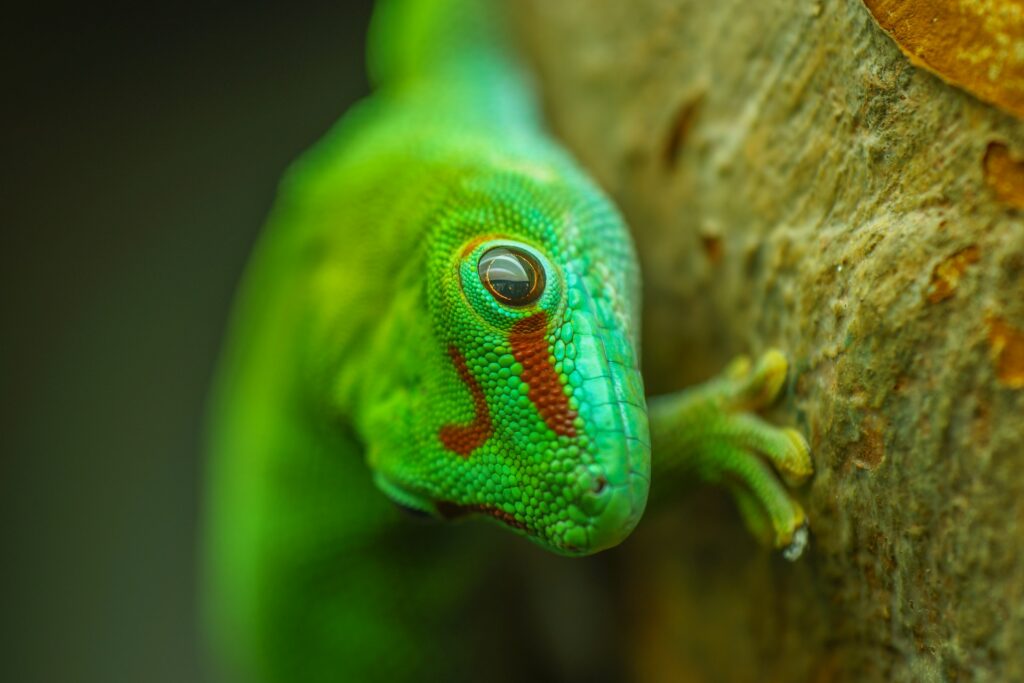
Day geckos demonstrate remarkable visual processing abilities that contribute to their impressive cognitive toolkit. These colorful lizards excel at visual discrimination tasks, quickly learning to associate specific shapes or colors with food rewards.
Their excellent color vision allows them to make fine distinctions between visual stimuli that would challenge many other animals.
In experimental settings, day geckos have shown the ability to remember visual cues for extended periods, suggesting robust long-term memory for relevant environmental features.
These geckos also display observational learning capabilities, watching the behaviors of conspecifics and human caretakers and incorporating that information into their own behavioral repertoires, demonstrating a sophisticated integration of visual information with adaptive behavior.
Cognitive Enrichment for Captive Lizards
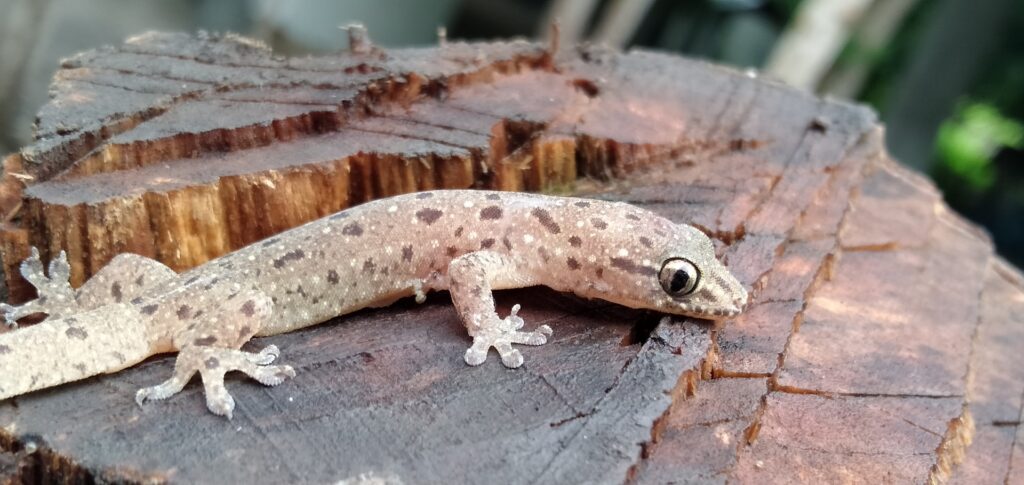
Recognition of lizard intelligence has revolutionized captive care practices, with cognitive enrichment now considered essential for their psychological well-being.
Modern reptile keepers incorporate puzzle feeders that require lizards to solve problems to access food, mimicking the cognitive challenges they would face when foraging in the wild.
Environmental complexity, including climbing structures, hiding places, and varied textures, stimulates spatial memory and exploration in captive lizards.
Social enrichment through appropriate interaction with caretakers or, in some species, carefully managed interaction with conspecifics, provides mental stimulation and opportunities for social learning.
Research indicates that lizards provided with cognitive enrichment display more natural behaviors, reduced stress responses, and even show signs of positive emotional states, suggesting that mental stimulation is as important for reptilian well-being as it is for mammals and birds.
The Future of Lizard Cognition Research
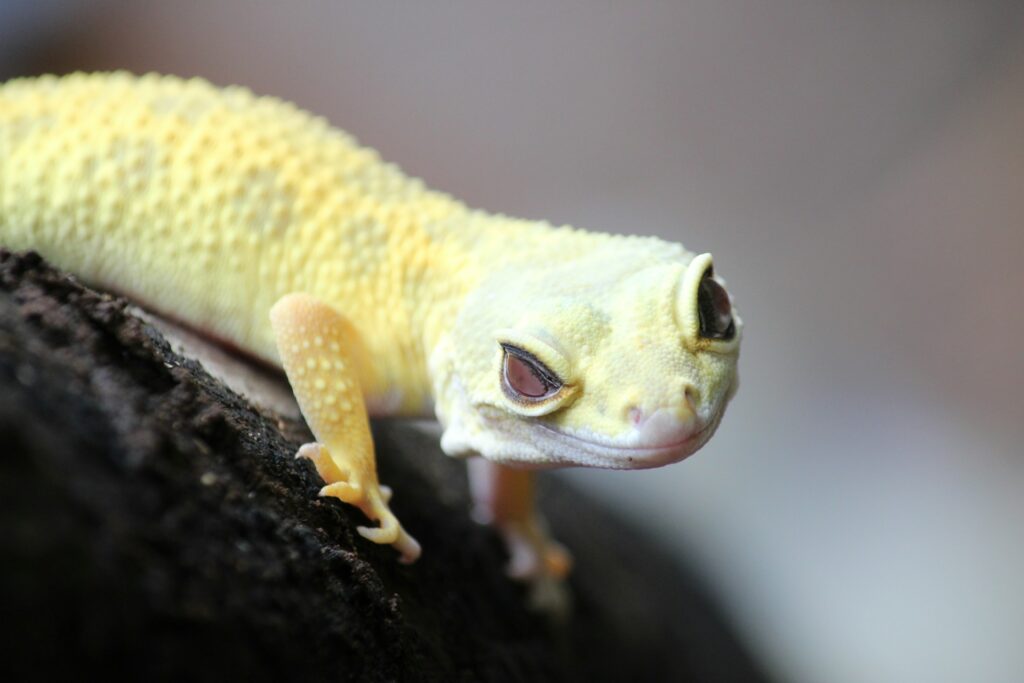
The frontier of lizard cognition research promises exciting discoveries that may further challenge our understanding of animal intelligence.
Advanced neuroimaging techniques adapted for reptiles are beginning to reveal previously unknown details about how lizard brains process information and form memories.
Genetic studies examining the evolution of cognitive traits across reptile lineages may help explain why certain species like monitors developed enhanced intelligence.
Researchers are increasingly investigating the potential for theory of mind in some lizard species, examining whether they can attribute mental states to others—a cognitive ability once thought exclusive to primates and a few other mammals.
As research continues to move beyond mammal-centric models of intelligence, our understanding of lizard cognition will likely reveal even more sophisticated abilities, potentially revolutionizing how we conceptualize the evolution of intelligence across the animal kingdom.
Conclusion

The cognitive capabilities of lizards represent one of the most underappreciated aspects of animal intelligence.
From monitors that can count to tegus that form emotional bonds with their caretakers, these reptiles display problem-solving abilities, memory, and even social learning that would have seemed impossible just decades ago.
Their intelligence has evolved along different evolutionary pathways than mammalian intelligence, yet achieved remarkable capabilities suited to their ecological niches.
As we continue to explore reptilian cognition with appropriate research methods and respect for their unique sensory worlds, we’re likely to discover even more surprising intellectual abilities in these fascinating animals.
The emerging picture suggests that intelligence has evolved multiple times across the animal kingdom, reminding us that impressive cognitive capabilities can exist in unexpected places—even behind the enigmatic gaze of a lizard.




